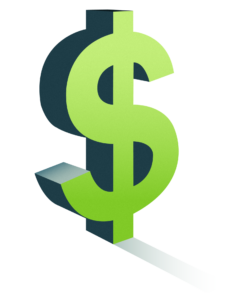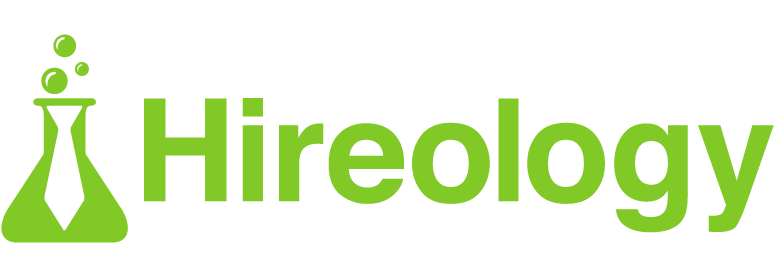Introduction
How to choose the right payroll provider for your business
 No matter what your company does, you need a system in place to pay your employees. But today’s payroll systems need to do more than just cut checks to prove their value, and choosing the right one for your company can be tough.
No matter what your company does, you need a system in place to pay your employees. But today’s payroll systems need to do more than just cut checks to prove their value, and choosing the right one for your company can be tough.
You have many options to choose from to get your employees paid accurately and on time. Picking the right provider can drive substantial cost savings while also helping automate the most admin-intensive parts of the people process. And at a time when hiring is harder than ever and turnover is at an all-time high, anything you can do to save your HR team time and reduce the risk of error can go a long way.
Technology continues to transform service providers allowing them to provide more efficiency, value, and insights. Now may be the perfect time to see if another payroll provider might save your team money and provide a larger breadth of services related to payroll processing, time and attendance, HR administration, benefits tracking, and reporting.
In this guide, we’ll walk through features we consider to be mission-critical for modern payroll platforms to offer your team. While transitioning to a new payroll system requires work, think about how much value your current payroll provider offers in each of these key areas to determine if your system can be working more effectively for your team.
Consolidating Vendors into One Payroll Platform
Many business leaders make the mistake of seeing payroll as simply the process of cutting checks to pay employees. While this is the main goal of any payroll system, this leaves out other related yet critical tasks such as tracking time and attendance, benefits elections, compliance, taxes, onboarding, and reporting.
If your current payroll provider lacks the above capabilities, you’ll likely need another vendor system to manage these important parts of your people operations. Not only does this create a lot of administrative-intensive busy work to copy data between providers, it leaves your team open to mistakes and inaccuracies due to human error. Having multiple vendors managing payroll operations could also mean costly recurring expenses to manage these independent systems.
Sophisticated payroll vendors integrate everything into one seamless platform, dramatically reducing the number of separate systems, errors, and time related to the entire payroll and HR process. Costs are lowered by consolidating efforts into one system, and time is saved by having the data flow through the platform across each aspect of your payroll needs.
Payroll-related costs can account for up to 50% of total business expenses.
How many Systems Do You Use for Your HR Processes?
Some businesses use up to a dozen different systems to manage HR efforts, leading to a significant amount of manual data entry and system management.
Which HR systems or services does your team require today? Can you integrate each needed step with your payroll platform?
- Recruitment Platform
- Hiring Software
- Employee Onboarding
- Employee Training
- Tax Reporting
- Time & Attendance
- Scheduling platform
- Employee Payroll
- Commuter Benefits
- Health Benefits
- 401K Retirement Contributions
- Performance Reviews
- Compliance Management
- COBRA Management
Many business owners and HR leaders have so many systems in place that they’ve lost track of how many steps are required to run an effective process, reducing the effectiveness each provides. As a result, productivity and profitability take a hit thanks to these disconnected and inefficient systems.
Reducing Mistakes and Admin-Intense Work
A common problem with running HR efforts through disparate solutions is these systems rarely communicate or integrate with one another, leading to added administrative work for your employees and staff.
If an employee updates his or her benefits in one system — such as opting for different health care coverage or retirement contributions — your HR or finance staff will have to manually update this information in the benefits portal and then make any adjustments to payroll separately. While a single instance might be an easy update to complete, scaled across your entire team — or multiple locations — the burden becomes clearer: especially during months that include open enrollment or when hiring picks up due to seasonality.
Managing multiple, disconnected systems can also lead to inaccurate tax withholdings, payroll mistakes, scheduling errors, or a variety of other issues not seen with integrated systems. Even seasoned finance professionals run the risk of these clerical errors working with multiple systems.
With manual data entry, there’s always a chance of human error. Errors around payroll can lead to employees facing additional tax liabilities, benefits errors, or other headaches that lead to a poor employee experience. Payroll mistakes can also mean issues with the latest compliance regulations, potentially resulting in lawsuits, audits, or compliance-related disputes.
Errors around payroll can lead to employees facing additional tax liabilities, benefits errors, or other headaches that lead to a poor employee experience.
Beyond being more accurate, having integrated systems — or one unified payroll platform — will help your finance team by freeing up time from administrative data entry so they can concentrate on more strategic efforts.
Supporting a Variety of Payroll Pay Schedules
While many businesses employ a standard bi-monthly pay period for full time and part time employees, other organizations require more flexible payroll runs that can be costly if your provider charges for each time payroll is pulled.
Organizations like automotive dealerships may have separate schedules for full-time non-revenue employees like leadership, HR, and operations, while sales and finance may also require separate payroll runs for incentive payouts. Adding to this, the fixed-operations team may be on a completely different timetable, and require flag-time calculations to accurately pay technicians, parts managers, and mechanics.
When choosing a new payroll provider, be sure they support the needs of your pay schedule to ensure everyone can get paid in a timely manner without the need to manually calculate wages. If you have special compensation requirements for specific teams, be sure this can be calculated by your system without having to manually estimate compensation for schedules such as flag time or other technical compensation models.
If you have employees that have sales bonuses factored into their compensation, make sure your new payroll provider can integrate with your business platform, such as a dealership management system (DMS) or other centralized sales software. Not only will this help you save time from manually calculating commissions for each team member, it will ensure payment is calculated accurately based on transactional sales data.
Automate Tax Filing, Time Tracking, Benefits and Compliance
A critical component of any organization, payroll includes all aspects of organizing, delivering, and analyzing the various components of making sure employees are compensated in a timely and accurate manner.
Beyond the surface of scheduling regular payments to various team members across your company, payroll includes compliance with tax withholding and bonus calculation. Your payroll provider should also support automatic tax filing. Unlike manual tax filing, this will save your business time and money otherwise spent on a CPA or internal employee tasked with the manual work.
Your system should also easily track, monitor, and manage employee schedules, arrivals, breaks, departure times, and time off. Time tracking should also include capabilities to proactively notify managers and employees of potential overtime and paid time off thresholds, saving departments from cutting into their bottom lines. That can be done using device logins via a centralized terminal, mobile apps installed on employee devices, or biometric time clocks physically located in your business. Having a payroll system that can handle time tracking will automate employee attendance records and proactively help your team staff up appropriately.
Your system should also easily track, monitor, and manage employee schedules, arrivals, breaks, departure times, and time off.
Finally, any new payroll system should help you track benefits, and make it simple for employees to enroll in the various programs you offer. These benefits may include healthcare, life insurance, retirement planning, commuter benefits, and other other programs you may have set up for your employees as workplace perks. By tracking benefits in one, integrated platform, you can have automated reporting at both an organizational and individual level while maintaining compliance.
Which benefits programs are managed by your payroll platform today?
- Health insurance
- Life insurance
- Retirement
- Commuter benefits
- Health savings
- Wellness elections
By integrating with your payroll, any changes to an employees’ benefits choices will automatically be reflected in the next paycheck instead of your HR or finance team needing to manually update this information.
Evolving compliance regulations
Keeping up with constantly changing state and federal compliance regulations can also be a never-ending cycle, and your business can face steep fines or lawsuits for seemingly simple mistakes.
But automating your HR processes enables you to stay compliant without spending time manually tracking each compliance update. Rather than using a standalone payroll solution, an integrated talent management solution comes equipped with all the tools and reports needed to maintain compliance, including the following:
- Employee verification
- Tax compliance
- Minimum wage and overtime compliance
- Equal employment opportunity compliance
- …and more
Getting World-Class Customer Service
The software platform you decide to move forward with is only one part of your payroll experience. When you need something or have a question, top vendors will provide outstanding customer service and support.
When looking at a new payroll system, the customer service model provided should be a top consideration. If the only line of support is a “Contact Us” page or an 800-number, this should be a red flag. Instead, look for a payroll provider that offers a dedicated customer service team that has payroll accreditations for your state or local area. This team will know your business inside and out, making them better equipped to answer questions you have – especially if they are related to issues around wages, taxation or other specific issues that could have repercussions for your organization or employees.
If the only line of support is a “Contact Us” page or an 800-number, this should be a red flag.
Customer service also extends to your implementation of a new payroll provider. Payroll transitions are never easy, so be sure you have a partner in place willing to work with you to make sure your transition follows a detailed process with all stakeholders aligned on the plan of action.
Newer providers will also payroll “dry runs” which happen one pay period before the official transition. With team, wage, schedule and tax data loaded into the new system, a mock payroll run happens, allowing your team to compare the example payouts to your legacy system to track accuracy and fix mistakes well before the official switch in providers. Payroll dry runs should put a lot of concerns over the payroll transition at rest since it ensures employees will not be disrupted if any discrepancies are discovered during this testing period.
Comprehensive Reports on Payroll Activities and ROI
Your payroll system should provide robust talent management analytics so various stakeholders in your company can gauge overall business health. These insights include, turnover analysis, benefit plan spend, wage spend, headcount analysis, new hire analysis, and employee profitability.
Using this data, you can be better equipped to make key business decisions, such as hiring or letting go of employees based on business need, and improving business operations if you see high turnover rates. To better measure the health of your hiring process specifically, also look for an integrated hiring and talent management provider that shares key insights such as your overall hiring velocity (time to hire) and hiring process adherence in comparison to industry benchmarks.
Is your system proactively tracking any of these metrics today?
- Turnover and retention
- Benefit plan spending
- Wage spending
- Headcount analysis
- New hire analysis
- Employee profitability
If your existing HR solutions and payroll don’t integrate with one another, you won’t have access to business intelligence to determine what’s working and what’s not with your HR and talent management efforts. This means you won’t have the capabilities to track red flags such as: overtime costs, paid time off usage, turnover rates and employee profitability. A new payroll platform that offers robust reporting and analytics can help you uncover insights on your team that can help drive substantial savings back to your business.
Providing A Great Employee Experience
Once an employee signs an offer letter, easily make the switch from candidate to employee through the integration between your hiring and talent management platform.
You’ll already have the employee’s information from the hiring process, so you can automatically create an employee profile and ensure you have everything you need before onboarding begins without manually needing to key in data.
With legacy payroll providers, most new employees spend the majority of their first day on the job filling out administrative paperwork, leading to decreased productivity and employee engagement out of the gate. But onboarding is a critical first step for new employees – forms need to be completed, handbooks read and benefits selected, without errors. Make the process easier and more efficient by partnering with a payroll provider that offers paperless onboarding by sending employees all relevant materials digitally, requiring all documents to be signed before the first day.
Starting with onboarding and throughout each employee’s time at your company, it’s important to have the right technology and processes in place to make HR-related tasks as user-friendly as possible. Look for an integrated, automated payroll and talent management system so employees only need to remember the credentials for one system to retrieve pay stubs, input benefits information, and access tax forms. This will make all HR-related tasks easier on employees and enable them to spend more time on their day-to-day responsibilities, while also saving your HR department time spent on administrative tasks.
Look for an integrated, automated payroll and talent management system so employees only need to remember the credentials for one system to retrieve pay stubs, input benefits information, and access tax forms.
A provider that also offers an intuitive employee portal or mobile app can also go a long way to helping employees enroll or change benefits throughout their tenure. Employees will likely be more likely to review or provide updated information if they’re able to self-service this information instead of requiring a meeting with HR or completing paper forms which also take away from your team’s time while also opening up the potential for errors in the process.
Pricing Transparency Should Mean No Costly Surprises
Legacy payroll systems have a bad reputation of hidden fees for mission-critical features, contract lock-ins, and inconsistent pricing. Unclear pricing might mean surprise costs from your legacy payroll provider.
Across the various systems needed to power your business, fees can add up quickly. Your payroll platform should never surprise you with unexpected overages or price increases during your renewal period. In addition to a monthly or annual cost, some payroll providers may also charge per payroll run and include added costs for reporting and end-of-year tax forms. These added costs can be hidden in confusing billing language that’s difficult to understand, resulting in lost investment due to poorly planned feature needs.
Your payroll platform should never surprise you with unexpected overages or price increases during your renewal period
Instead, look for a provider who offers transparent, per-employee per-month (PEPM) pricing so you can easily plan and forecast your fixed costs, avoiding surprising overages as a result of growing your team or requiring new features. Additionally, many modern payroll providers offer tax forms, reporting and unlimited payroll runs in their base packages, which may be more cost-effective than staying with your legacy payroll partner feature needs.
Next Steps
A robust payroll platform is just one piece of a strong people process — Hireology can help you put the puzzle together. With payroll powered by Netchex, our all-in-one software can handle the full employee lifecycle.
To see how Hireology helps organizations of all sizes develop a hiring process and centralize talent management to build and manage their best teams, book a demo below.

